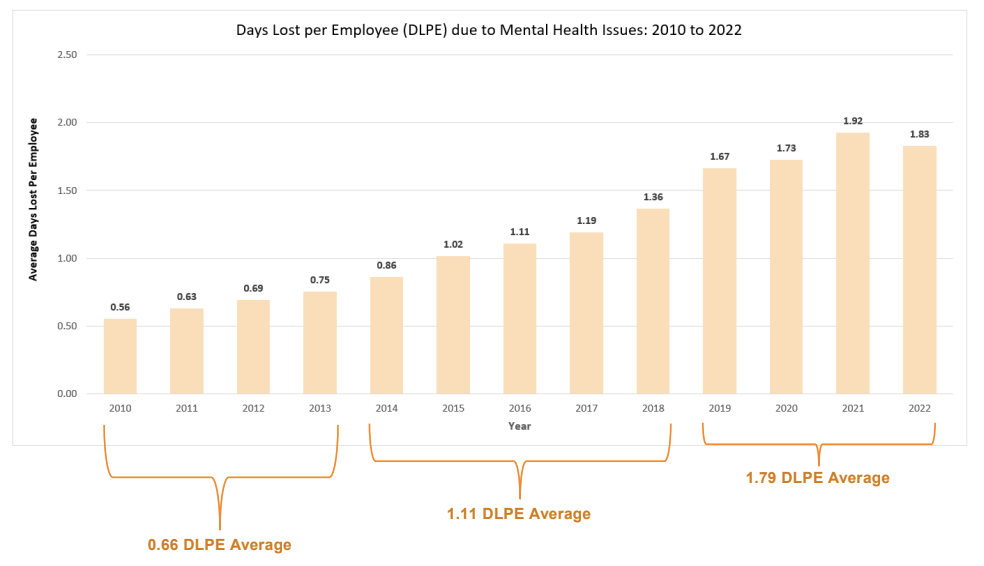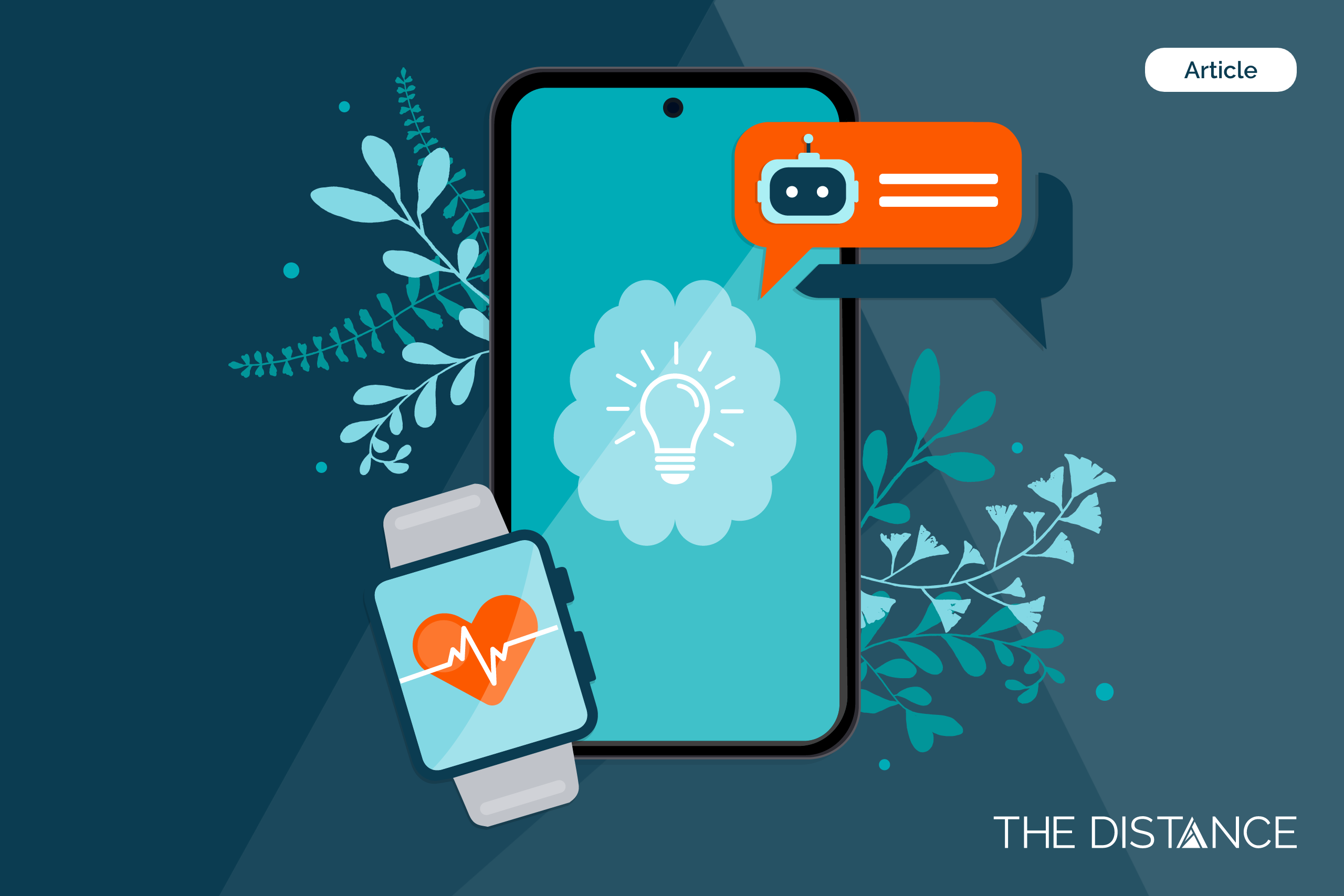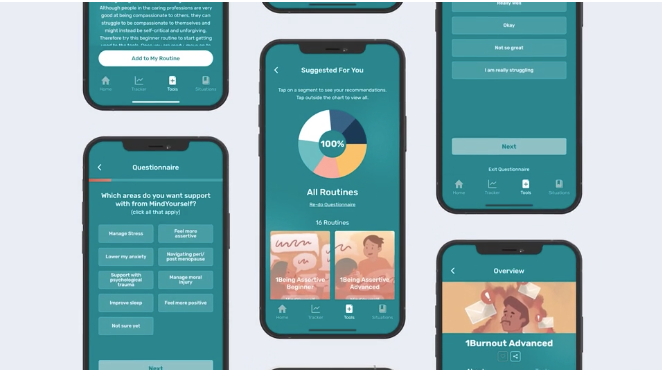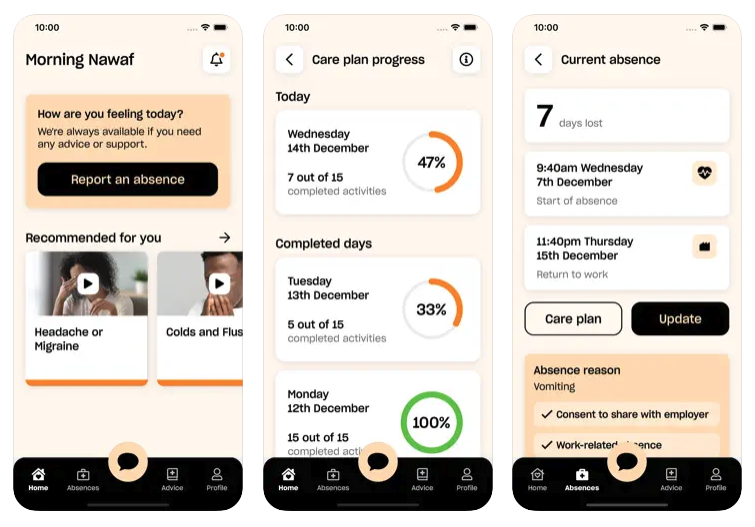Can an organisation’s app, or its digital practices, improve staff wellbeing or a team member’s mental health?
‘Healthy Digital Innovation’, a recent event held at Platform, Leeds, offered some potential answers to this vital question from panellists including:
- Dr Jan Smith, Mind Yourself App – an app aimed at preventing mental health difficulties among health and care professionals
- Alex La Via, Live More Offline – a training provider and consultancy, specialising in healthy digital balance for organisations and employees
- Tim Brazier, Thrive by Design – an agency which supports healthcare clients in delivering inclusive digital services
We were there to capture the panellists’ views on healthy digital innovation. Here are five key takeaways:
1. Quick solutions are key for time-poor team members
Dr Jan Smith, co-creator of Mind Yourself App, noted the importance of speed in providing in-app mental health support to busy workers.
“Mind Yourself prevents escalation of mental health symptoms for workers who are short on time – and aren’t we all short on time?”
said Dr Smith.
“It’s key to provide evidence-based mental health solutions and strategies that people can use in under five, ten, fifteen minutes – while they’re walking down the corridor, writing their notes, or in-between tasks.”
2. In-app peer intervention and A.I. can help people to reach out
MindYourself App’s co-creator Dr Jan Smith noted that in-app features can help workers with the difficult process of disclosing and discussing their mental health problems – especially when the complexity of the issue ramps up beyond stress, to experiences such as anxiety, depression and trauma.
“Being able to share and reach out for support when we need it the most is really difficult for people, which is why we’ve developed our peer intervention feature,”
said Dr Smith.
“You can go into the app, say you need to talk to someone, and you’ll either be directed to a real, live person you can talk to – or out-of-hours they can get instant support through A.I. and machine learning.”
Dr Smith shared that the next part of Mind Yourself App’s roadmap is to provide therapy to users in-app. Read our guide to using in-app chat in our blog.
3. Healthy digital innovation can be especially important for underrepresented demographics
Alex La Via, Founder of Live More Offline, highlighted that healthy digital innovation is especially important to groups who rely on digital as a gateway for inclusion – such as women, those with caring responsibilities, and people who find it harder to make it to the office.
“In a hybrid working environment, you tend to get a skew where people from typically underrepresented demographics opt to work more digitally,”
said La Via.
“So then the question comes: are your digital behaviours and beliefs enabling equity of experience, so that you are not accidentally disadvantaging those who are already typically underrepresented in workplaces?”
Different demographics tend to have unique relationships and issues with digital working. For instance, La Via noted that 60% of women in hybrid work (mixing home working and office working) report feeling excluded from important meetings (source: Deloitte), and that neurodivergent people might be particularly distracted by chat messages. Good digital design should take this variety of experiences into account.
4. Consider the user’s situation, beyond your own digital UX
Tim Brazier, Managing Director of Thrive By Design, argued for deep consideration of the user when digitally transforming a service.
“When it comes to inclusion and accessibility, you should think about the person sitting in front of the computer. If there’s no accessible information that helps them to understand how to access the service, it creates a barrier that gets built up over time.
“Yes, this one interaction might be alright, but that person could be absolutely knackered, because they’ve just had to jump through 500 hoops to even get to this point.
“It’s really important to cross those digital boundaries, break down those silos and bring in people to understand what the user’s experiences are.”
We discussed this topic and highlighted our approach to accessible design in our recent blog post.
5. Use internal comms to promote app-use in moments of need
During the post-panel discussion, one audience member – a psychotherapist – posed a very interesting question to Dr Jan Smith of Mind Yourself App:
“When people are in crisis mode, they don’t reach out – even if there’s an app on their phone – because their nervous system is in fight-or-flight mode. How do you combat that?”
Dr Smith replied that Mind Yourself App’s approach is based on internal communications.
“One of our KPIs isn’t that you’re on the app every day – it’s that you use it in that moment of need,”
said Dr Smith.
“So, we support the organisations that use our app with the messaging around how team members should reach in and use it. ”
GoodShape’s perspective
Discussing this with our partner GoodShape, they shared the statistics from their own report on The Days Lost Per Employee (DLPE) absence rate due to Mental Health between 2010 to 2022:
Their main observations were:
- Mental Health related absence increased year on year between 2010 and 2021.
- It reduced for the first time in 2022, a reflection of the positive impact that increased attention and support can have.
- However, it is vital that efforts continue to reduce Mental Health and revise the previous 10 year trend.
- A failure to do so will mean that the average employee having nearly 2 days of Mental Health related absence a year will become the new “normal”.
Final thoughts
Speaking as app developers, it’s clear that digital experiences can potentially affect users’ mental well-being in positive ways. We’ve witnessed this effect in some of our clients’ apps, such as GoodShape. On the other hand, excessive use of certain features such as notifications and gamification (which are fine in moderation) can have harmful effects on some users.
Apps play a prominent role in their users’ lives, and their owners and developers, therefore, bear some responsibility for the user’s mental wellbeing. Conversations like the ‘Healthy Digital Innovation’ event can arm us with the knowledge we need to better serve the user’s best mental interests.
Are you an app owner? Talk to our team for guidance on how to apply innovative, mental-health-first thinking to your user experience.


